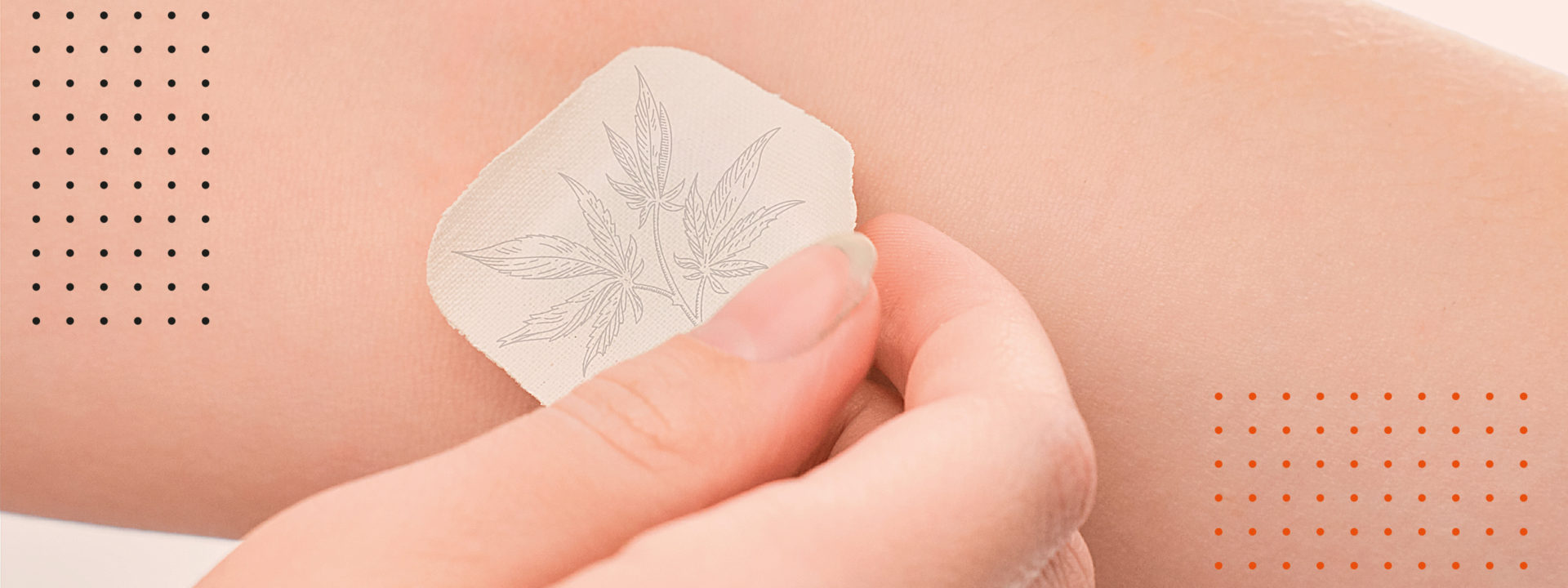As a cannabis LP serving medical patients in Ontario, we regularly speak with people who want to ingest cannabis but would rather not smoke, vape, or eat it. This is where a new form of cannabis delivery is proving useful and is thus becoming more popular – the THC transdermal patch.
What are THC patches and how do they work?
Transdermal patches, also known as ‘transdermal delivery systems’ or TDDS, aren’t a new invention. In fact, they were first introduced in 1979 to deliver scopolamine as a remedy for motion sickness but are now most commonly recognized in the form of nicotine patches available at any drugstore.
With Canada’s cannabis legalization, transdermal patches have since been adopted to deliver THC as well and offer yet another proven method to consume cannabis. Simply put, a THC transdermal patch is a thin piece of plastic coated with an adhesive. It resembles a large (often square) band-aid that has been infused with THC.
The most common form of THC patch is called a “reservoir patch”, which just as it sounds, contains a reservoir that is filled with THC solution (typically a gel). This type of patch includes a rate-controlling membrane that sits between the THC reservoir, the patch adhesive, and your skin, regulating the rate at which the THC solution is released.
When the THC patch is applied to the skin, a drug concentration gradient is set up, which means that the patch contains a lot of THC while the skin does not, and as the heat from your skin activates the patches transfer membrane, the THC begins to spread into your skin. This process is aided by a permeation enhancer that’s added to the rate-controlling membrane which helps bypass or soften your skins natural protective layer.
To use, one simply exposes the patch adhesive and sticks the patch to a venous part of the body like the upper arm, ankle or inside of the wrist. Once activated, THC patches consistently release small amounts of THC through the skin and into the bloodstream.
Do THC patches get you high?
Many people don’t want to feel high just to get symptom relief. With a patch, the cannabinoids are released into your bloodstream over a number of hours instead of all at once meaning you won’t get stoned. This slow release is similar to micro-dosing, but without the hassle of having to dose repeatedly throughout the day.
Another reason…
Sure, you could smoke, vape, eat an edible, or take a pill, but all those methods are prone to eliciting the psychoactive effects of THC. Unlike these other methods, THC patches deliver the cannabinoids directly into the bloodstream and then the brain, bypassing the lungs, liver, and stomach where it would otherwise be filtered, metabolized and altered into the more potent chemical 11-Hydroxy-THC.
THC oral sprays and sublingual tinctures can also get THC straight into the bloodstream without metabolization, but they do so quickly and will lead to you feeling the psychoactive effects. With the patch you get is a slow, timed release that can provide symptom relief lasting all day or night. Compared to other consumption methods.
No respiratory irritation
You’re not inhaling anything with a THC patch so there are no adverse effects to your respiratory system like there are with smoking, vaping, or dabbing.
Ultra-discreet
THC patches offer perhaps the most discreet method of cannabis consumption. Patches can be applied to a part of the body that’s hidden by clothing and they don’t require you to continually re-administer doses.
Accurate dosing
Unlike smoking, vaping, or taking edibles, THC patches are designed to offer a consistent, programmed dose every time.
Specific cannabinoid delivery
Transdermal patches can be infused with whatever cannabinoids the manufacturer chooses. This is similar to other oils, tinctures, and sprays which also allow for isolated delivery of only certain cannabinoids and their specific benefits.
De-administration
Once you’ve smoked a joint, hit a dab or ingested a pill, there’s not much you can do to stop the THC from entering your system. Even though a THC overdose isn’t fatal, it sure can be uncomfortable – especially if you didn’t want to get high at all in the first place. With a THC patch, if you feel you’ve had enough, simply remove the patch and that’s it, no more THC.
THC patches vs. Topicals
You’d think because both patches and topicals are applied directly to the skin for absorption, that their effects would be similar. This isn’t true however, because topicals (cannabis cream) typically only affect the top three skin layers and don’t get absorbed into the bloodstream. THC patches, on the other hand, are designed to deliver cannabinoids to the bloodstream and provide full-body effects rather than a spot treatment.
Should you choose THC patches?
Among the many varieties of cannabis products, THC patches offer a new game-changing way to administer cannabinoids. As with all things THC, the only way to find out if patches are right for you is to test them out for yourself. If you’ve tried ingesting or smoking and found that the psychoactive effects are not for you, then a transdermal THC patch might be what you’re looking for.
